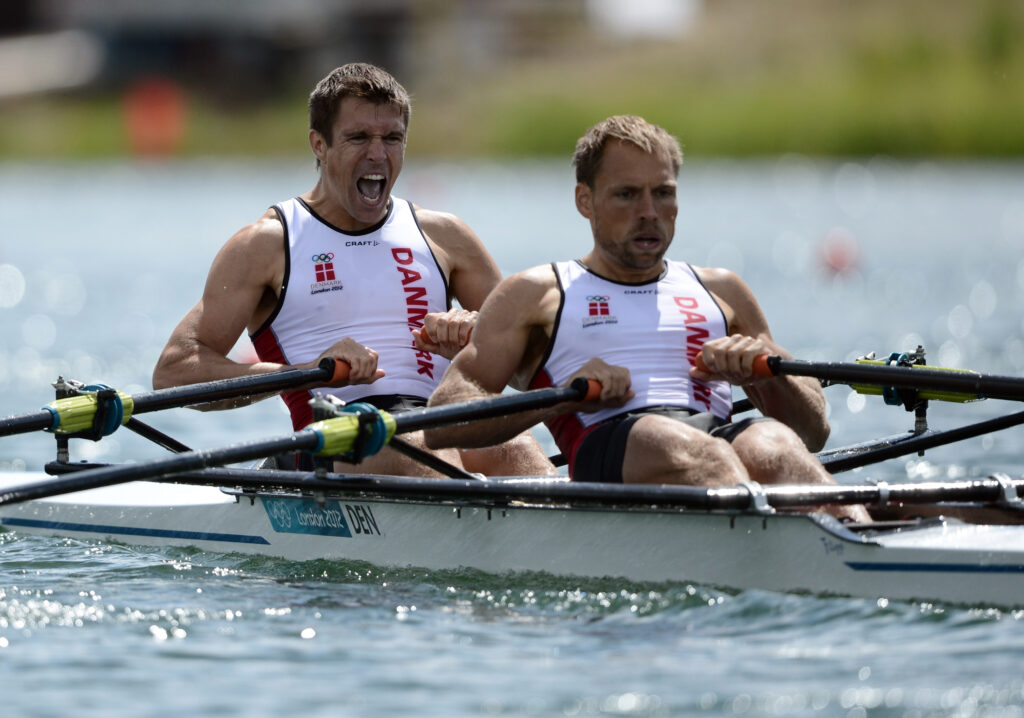
30 Oct 2024
Where are they now: Mads Rasmussen
It was the final of the lightweight men’s double sculls at the London Olympics. The favourites were the World and Olympic Champions Purchase and Hunter from Great Britain and they were racing in front of a very, very loud home crowd. Zac Purchase and Mark Hunter led the race at the start and still had the lead with 500m to go. But then the Danish duo of Mads Rasmussen and Rasmus Quist inched their way into the lead and took gold using a commanding final sprint.
Rasmussen still calls this race the highlight of his career and it remained his top result. But Rasmussen qualifies this.
“I’m also very proud of our bronze medal in Beijing because it came out of a crisis. We were good so the national team (leading into the Beijing Olympics) wanted to prioritise us and the coach had all sorts of ideas on what we should do.”
Rasmussen says it led to all sorts of arguments and, he says, the duo “crashed”. They still won bronze.
Rasmussen came to rowing at a relatively young age. He knew he wanted to be the best and was looking for right sport to achieve this.
“I was looking for a sport where I had a decent chance to do good. I started with running but someone told me I’d never make a world champion runner. I was about 11. Then my dad suggested rowing. I went to the local rowing club. I was in a great environment. It was outside and competition was accessible and I didn’t need much equipment.”
Rasmussen says he was elite focused from the beginning.
“I went to the club and said I wanted to be the best in the world. They soon saw that I was very serious. Right from the start I was there nearly every day.”
The young Rasmussen was not sure why he was so motivated, noting that no one in his family were sporty. But he does remember watching the Olympics and seeing the success of the Danish lightweight men’s four.
As a 16-year-old Rasmussen made the junior national team. Three years later he was on the senior team paired up with Quist. The partnership remained for his entire career taking in four Olympic Games and securing Olympic gold and bronze medals.

During his rowing career Rasmussen says him and Quist took very little time out of the boat.
“We were very lucky, Rasmus and I were rarely injured. Our team wanted us to go to physio and get injury training but we didn’t need it. In Athens I did have a broken rib and Rasmus had one a couple of times. And maybe a back problem for a couple of days, but never like a long injury.”
While training and competing Rasmussen studied to become a doctor. He says it was a disaster.
“I had no balance in my medical studies. I failed most of my exams when they were mid-season and I was signed out of university once because I didn’t make the exam. It took me 12 years to finish my studies.”
Retirement came after the Rio Olympics and Rasmussen says it was an easy decision and an easy transition.
“I was under pressure to finish my studies. I’d used up all of my excuses at the university. And also we didn’t do so good in Rio. Rasmus and I didn’t manage to get back into shape for Rio. We both had three kids and I wanted to finish my studies.”
Three kids and working as a doctor took over Rasmussen’s post-rowing life. Rowing is now not part of his life and tennis has stepped in as the sport of choice. Rasmussen followed his kids into tennis and he’s learnt that there’s a lot of similarities between it and rowing.
“People in both sports love to talk about technique and equipment and go into great detail. They also talk a lot about the weather being an outdoor sport.”
Rasmussen say’s he’s notched up a stack of life lessons from his time rowing. He names a few.
“Being in a process and having a far away goal and seeing it as a journey. Knowing I want to be better and knowing it might take five to ten years. I also learnt to be very critical about myself. Should I do things I usually do or can I do it better or smarter.”
And the final big question, what of the fate of lightweight rowing? “I think it’s sad, but I do see the benefit of not focusing on weight. I think the sport needs to develop. It needs to look at different distances so there’s room for small and big people.”

